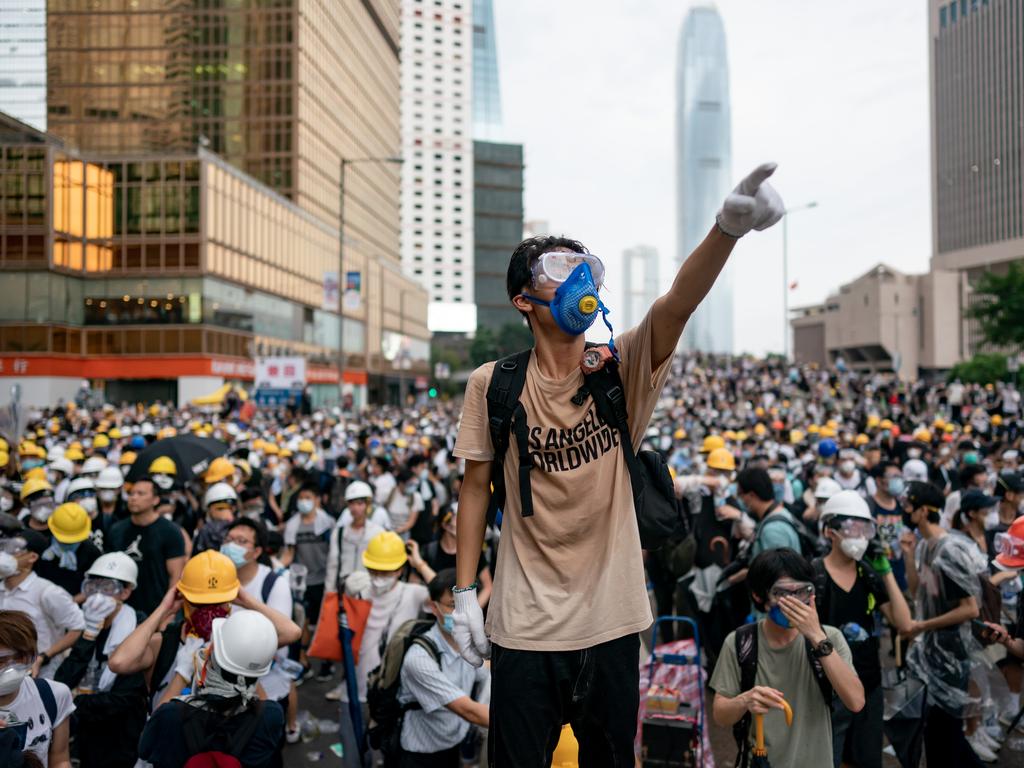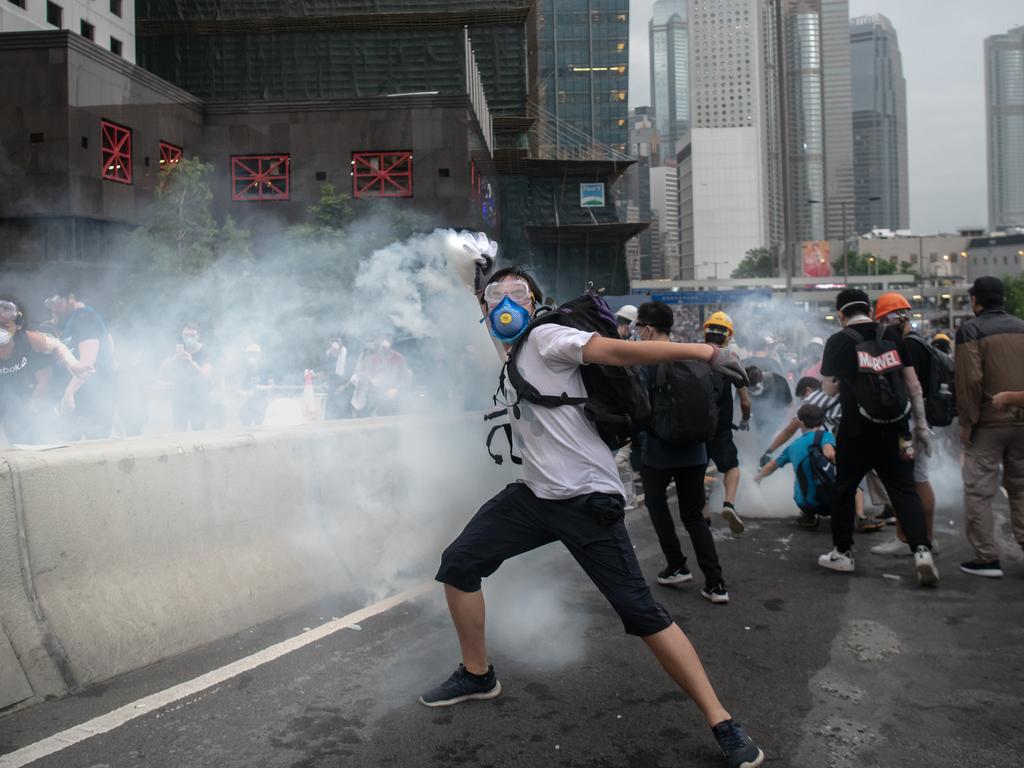Hong Kong protesters’ ingenious response to riot police
Riot police trying to bring an end to the Hong Kong protests seem to have an endless supply of tear gas — but locals have figured out how to stop it.
Riot police in Hong Kong appear to have an endless supply of tear gas, firing canisters at will and so often commuters in nearby train stations and shopping malls have been affected.
But protesters, who are fighting a proposed extradition bill that would allow people to be sent to mainland China for trial, have come up with an ingenious way to fight the tear gas.
Police fired tear gas, pepper spray and rubber bullets after well-organised protesters breached their cordon.
In videos shared on Twitter, protesters can be seen wearing dust and surgical masks and, when police fired tear gas, surrounding the canisters and dousing them in water to extinguish them.
— Nathan VanderKlippe (@nvanderklippe) June 12, 2019
People have since commented they’ve never seen the tactic used before, praising the protesters for being well-organised.
The extradition bill has become a lightning rod for concerns over greater Chinese control and erosion of civil liberties in the former British colony.
The violence marked a major escalation of the biggest political crisis in years for the semi-autonomous Chinese territory and forced the delay of legislative debate on the contentious bill.
College student Louis Wong said he considered the blockade of government headquarters and the Legislative Council a success because it appeared to prevent Beijing loyalists from advancing amendments to a pair of laws that would make it easier to send suspected criminals to China.
“This is a public space, and the police have no right to block us from staying here,” Mr Wong said, surveying a garbage-strewn intersection in the Admiralty neighbourhood that had been blocked off by security forces after protesters broke through a police cordon and entered the government complex.
“We’ll stay until the Government drops this law and (Chinese President) Xi Jinping gives up on trying to turn Hong Kong into just another city in China like Beijing and Shanghai,” he said.


Protesters who had massed outside the government building overnight on Tuesday began pressing against police yesterday, leading to police firing tear gas and pepper spray.
The overwhelmingly young crowd overflowed onto a major downtown road as they overturned barriers and tussled with police.
When some appeared to have breached a cordon around the building, the police launched their response.
A weekend protest of the extradition measure drew hundreds of thousands of people, and Hong Kong leader Carrie Lam said in a statement yesterday the peaceful rally had become a “blatant, organised riot”.
At a brief news conference held as the chaos swirled outside on Wednesday afternoon, Police Commissioner Stephen Lo Wai-chung said the “serious clashes” forced police to use pepper spray, bean bag rounds, rubber bullets and tear gas.
Officers also were hurt, some seriously, by rocks, bottles, traffic cones, metal barricades and other items thrown by protesters.
Police spokesman Gong Weng Chun defended the use of tear gas and other nonlethal weapons, saying officers wouldn’t have had to do so if they weren’t facing a threat that could lead to serious injury or death.
As of 10pm on Wednesday, at least 72 people were brought to seven hospitals, with two in serious condition, the Hong Kong Hospital Authority said.
Of those, 41 were later released, it added.
Mr Lo also called the demonstration a riot, which could mean long jail terms for anyone arrested, adding to fears Hong Kong’s government is using public disturbance laws to intimidate protesters.
“We condemn such irresponsible behaviour,” Mr Lo said.
“There’s no need to hurt innocent people to express your opinions,” he said, adding people should not “do anything they will regret for the rest of their lives”.
A curt government statement said a scheduled 11am legislative session would be “changed to a later time”.
Officials gave no indication of when that would be, and Ms Lam cancelled a news briefing.
Some businesses also closed for the day, and labour strikes and class boycotts were called.

The protests by the bill’s opponents are the largest since pro-democracy demonstrations closed down parts of the Asian financial centre for more than three months in 2014.
The demonstrations pose a challenge to Mr Xi who has said he will not tolerate Hong Kong being used as a base to question the ruling Communist Party’s authority.
But they are also giving a voice to the young in the territory who feel alienated by a political process dominated by the economic elite.
A protester, who gave her name only as King, fearing repercussions, said the protest was a watershed moment for Hong Kong’s youth.
“We have to stand up for our rights or they will be taken away,” she said.
Dressed in black T-shirts and jeans, many protesters appeared undaunted by police demands to disperse.
The demonstrators also appeared mindful of Beijing’s growing use of electronic surveillance, such as facial recognition technology, to build dossiers on those it considers politically unreliable, and many of them wore surgical masks to hide their features as well as reduce the effects of tear gas.

Such protests are never tolerated in mainland China, and Hong Kong residents can face travel bans and other repercussions if they cross the border.
Under its “one country, two systems” framework, Hong Kong was supposed to be guaranteed the right to retain its own social, legal and political systems for 50 years following its handover from British rule in 1997.
However, China’s Communist Party has been seen as increasingly reneging on that agreement by forcing through unpopular laws.
A vote on the legislation is scheduled on June 20.
— with AFP



